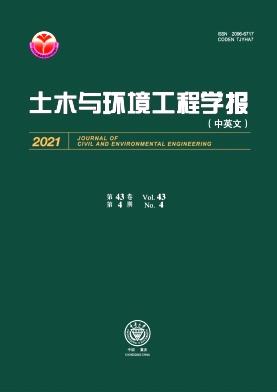Anaerobic Digestion of Banana Wastes for Biogas Production
Q2 Engineering
Tumu yu Huanjing Gongcheng Xuebao/Journal of Civil and Environmental Engineering
Pub Date : 2020-01-01
DOI:10.37421/jcde.2020.10.347
引用次数: 2
Abstract
Agriculture is one of the main economic activities for Kenyans; the wastes from agriculture are minimally used. Among the crops grown in Kenya is the banana and produces about one million tonnes of bananas yearly, mostly for local consumption, of which the banana herb produces the fruits once in a lifetime, thus the stem becomes waste afterward. The waste from the banana plant includes leaves, stems, peduncles, peels, and rejected fruits. The banana waste is organic and thus is suitable for anaerobic digestion in which the solid digestate has suitable nutrients to be used as fertilizer. Batch fermentation at the mesophilic temperature range was carried out in triple determinations, this also applied to the blank sample. After the batch test was complete, the pH of the fermentation residue was measured electrochemically using a pH meter. The COD of the residue (both Solid and liquid) was also determined. Analysis of the biogas produced by gas chromatography enabled the methane part of the gas to be calculated.香蕉废弃物厌氧消化产沼气研究
农业是肯尼亚人的主要经济活动之一;农业废弃物得到了最低限度的利用。在肯尼亚种植的作物中有香蕉,每年生产大约100万吨香蕉,主要用于当地消费,其中香蕉草一生只生产一次果实,因此茎之后就变成了废物。香蕉植物的废物包括叶子、茎、花梗、果皮和丢弃的果实。香蕉废物是有机的,因此适合厌氧消化,其中固体消化物有合适的营养成分用作肥料。在中温温度范围内分批发酵进行了三重测定,这也适用于空白样品。批试验完成后,用pH计电化学测定发酵残渣的pH值。测定了残渣的COD(固体和液体)。通过气相色谱法对沼气进行分析,可以计算出沼气中甲烷的含量。
本文章由计算机程序翻译,如有差异,请以英文原文为准。
求助全文
约1分钟内获得全文
求助全文
来源期刊

Tumu yu Huanjing Gongcheng Xuebao/Journal of Civil and Environmental Engineering
Engineering-Architecture
CiteScore
1.30
自引率
0.00%
发文量
5346
 求助内容:
求助内容: 应助结果提醒方式:
应助结果提醒方式:


